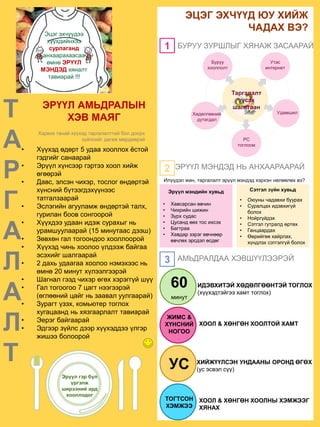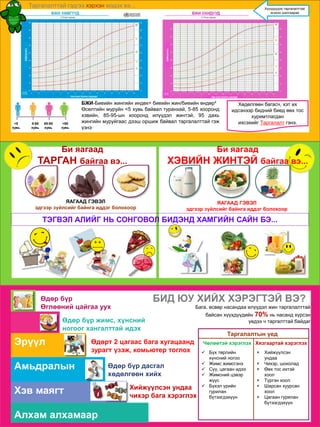Child obesity —Е“ѓ“ѓ—Е–і–Є–є–љ —В–∞—А–≥–∞–ї–∞–ї—В
- 1. –≠—Ж—Н–≥ —Н—Е—З“ѓ“ѓ–і—Н—Н —Е“ѓ“ѓ—Е–і–Є–є–љ—Е—Н—Н —Б—Г—А–ї–∞–≥–∞–љ–і –∞–љ—Е–∞–∞—А–∞—Е–∞–∞—Б–∞–∞ ”©–Љ–љ”© –≠–†“Ѓ“Ѓ–Ы –Ь–≠–Э–Ф–≠–Ф —Е—П–љ–∞–ї—В —В–∞–≤–Є–∞—А–∞–є !!! –Ґ –Р –† –У –Р –Ы –Р –Ы –Ґ –≠–¶–≠–У –≠–•–І“Ѓ“Ѓ–Ф –Ѓ–£ –•–Ш–Щ–Ц –І–Р–Ф–Р–• –Т–≠? –Ґ–∞—А–≥–∞–ї–∞–ї—В “ѓ“ѓ—Б—Н—Е —И–∞–ї—В–≥–∞–∞–љ –С—Г—А—Г—Г —Е–Њ–Њ–ї–ї–Њ–ї—В –£—В–∞—Б –Є–љ—В–µ—А–љ–µ—В –£–і–∞–Љ—И–Є–ї–•”©–і”©–ї–≥”©”©–љ–Є–є –і—Г—В–∞–≥–і–∞–ї PC —В–Њ–≥–ї–Њ–Њ–Љ 60 –Љ–Є–љ—Г—В –Ц–Ш–Ь–° & –•“Ѓ–Э–°–Э–Ш–Щ –Э–Ю–У–Ю–Ю –£–° –Ґ–Ю–У–Ґ–°–Ю–Э –•–≠–Ь–Ц–≠–≠ –Ш–Ф–≠–Т–•–Ш–Ґ–≠–Щ –•”®–Ф”®–Ы–У”®”®–Э–Ґ–≠–Щ –Ґ–Ю–У–Ы–Ю–• (—Е“ѓ“ѓ—Е—Н–і—В—Н–є–≥—Н—Н —Е–∞–Љ—В —В–Њ–≥–ї–Њ—Е) –•–Ю–Ю–Ы & –•”®–Э–У”®–Э –•–Ю–Ю–Ы–Ґ–Ю–Щ –•–Р–Ь–Ґ –•–Ш–Щ–Ц“Ѓ“Ѓ–Ы–°–≠–Э –£–Э–Ф–Р–Р–Э–Ђ –Ю–†–Ю–Э–Ф ”®–У”®–• (—Г—Б —Н—Б–≤—Н–ї —Б“ѓ“ѓ) –•–Ю–Ю–Ы & –•”®–Э–У”®–Э –•–Ю–Ю–Ы–Э–Ђ –•–≠–Ь–Ц–≠–≠–У –•–ѓ–Э–Р–• –≠–†“Ѓ“Ѓ–Ы –Р–Ь–ђ–Ф–†–Р–Ы–Ђ–Э –•–≠–Т –Ь–Р–ѓ–У –Ш–ї“ѓ“ѓ–і—Н–ї –ґ–Є–љ, —В–∞—А–≥–∞–ї–∞–ї—В —Н—А“ѓ“ѓ–ї –Љ—Н–љ–і—Н–і —Е—Н—А—Е—Н–љ –љ”©–ї”©”©–ї”©—Е –≤—Н? вАҐ –•“ѓ“ѓ—Е—Н–і ”©–і”©—А—В 5 —Г–і–∞–∞ —Е–Њ–Њ–ї–ї–Њ—Е —С—Б—В–Њ–є –≥—Н–і–≥–Є–є–≥ —Б–∞–љ–∞–∞—А–∞–є вАҐ –≠—А“ѓ“ѓ–ї —Е“ѓ–љ—Б—Н—Н—А –≥—Н—А—В—Н—Н —Е–Њ–Њ–ї —Е–Є–є–ґ ”©–≥”©”©—А—Н–є вАҐ –Ф–∞–≤—Б, —Н–ї—Б—Н–љ —З–Є—Е—Н—А, —В–Њ—Б–ї–Њ–≥ ”©–љ–і”©—А—В—Н–є —Е“ѓ–љ—Б–љ–Є–є –±“ѓ—В—Н—Н–≥–і—Н—Е“ѓ“ѓ–љ—Н—Н—Б —В–∞—В–≥–∞–ї–Ј–∞–∞—А–∞–є вАҐ –≠—Б–ї—Н–≥–Є–є–љ –∞–≥—Г—Г–ї–∞–Љ–ґ ”©–љ–і”©—А—В—Н–є —В–∞–ї—Е, –≥—Г—А–Є–ї–∞–љ –±–Њ–Њ–≤ —Б–Њ–љ–≥–Њ–Њ—А–Њ–є вАҐ –•“ѓ“ѓ—Е–і—Н—Н —Г–і–∞–∞–љ –Є–і—Н–ґ —Б—Г—А–∞—Е—Л–≥ –љ—М —Г—А–∞–Љ—И—Г—Г–ї–∞–∞—А–∞–є (15 –Љ–Є–љ—Г—В–∞–∞—Б –і—Н—Н—И) вАҐ –Ч”©–≤—Е”©–љ –≥–∞–ї —В–Њ–≥–Њ–Њ–љ–і–Њ–Њ —Е–Њ–Њ–ї–ї–Њ–Њ—А–Њ–є вАҐ –•“ѓ“ѓ—Е—Н–і —З–Є–љ—М —Е–Њ–Њ–ї–Њ–Њ “ѓ–ї–і—Н—Н–ґ –±–∞–є–≥–∞–∞ —Н—Б—Н—Е–Є–є–≥ —И–∞–ї–≥–∞–∞—А–∞–є вАҐ 2 –і–∞—Е—М —Г–і–∞–∞–≥–∞–∞ —Е–Њ–Њ–ї–Њ–Њ –љ—Н–Љ—Н—Е—Н—Н—Б –љ—М ”©–Љ–љ”© 20 –Љ–Є–љ—Г—В —Е“ѓ–ї—Н—Н–ї–≥—Н—Н—А—Н–є вАҐ –®–∞–≥–љ–∞–ї –≥—Н—Н–і —З–Є—Е—Н—А ”©–≥”©—Е —Е—Н—А—Н–≥–≥“ѓ–є —И“ѓ“ѓ вАҐ –У–∞–ї —В–Њ–≥–Њ–Њ–≥–Њ–Њ 7 —Ж–∞–≥—В –љ—Н—Н–≥—Н—Н—А—Н–є (”©–≥–ї”©”©–љ–Є–є —Ж–∞–є–≥ –љ—М –Ј–∞–∞–≤–∞–ї —Г—Г–ї–≥–∞–∞—А–∞–є) вАҐ –Ч—Г—А–∞–≥—В “ѓ–Ј—Н—Е, –Ї–Њ–Љ—М—О—В–µ—А —В–Њ–≥–ї–Њ—Е —Е—Г–≥–∞—Ж–∞–∞–љ–і –љ—М —Е—П–Ј–≥–∞–∞—А–ї–∞–ї—В —В–∞–≤–Є–∞—А–∞–є вАҐ –≠–µ—А—Н–≥ –±–∞–є–≥–∞–∞—А–∞–є вАҐ –≠–і–≥—Н—Н—А –Ј“ѓ–є–ї—Б –і—Н—Н—А —Е“ѓ“ѓ—Е—Н–і–і—Н—Н “ѓ–ї–≥—Н—А –ґ–Є—И—Н—Н –±–Њ–ї–Њ–Њ—А–Њ–є –•—Н—А–≤—Н—Н —В–∞–љ–∞–є —Е“ѓ“ѓ—Е—Н–і —В–∞—А–≥–∞–ї–∞–ї—В—В–∞–є –±–Њ–ї –і–Њ–Њ—А—Е –Ј“ѓ–є–ї—Б–Є–є–≥ –і–∞–≥–∞–ґ –Љ”©—А–і”©”©—А—Н–є –≠—А“ѓ“ѓ–ї –Љ—Н–љ–і–Є–є–љ —Е—Г–≤—М–і вАҐ –•–∞–≤—Б–∞—А—Б–∞–љ ”©–≤—З–Є–љ вАҐ –І–Є—Е—А–Є–є–љ —И–Є–ґ–Є–љ вАҐ –Ч“ѓ—А—Е —Б—Г–і–∞—Б вАҐ –¶—Г—Б–∞–љ–і ”©”©—Е —В–Њ—Б –Є—Е—Б—Н—Е вАҐ –С–∞–≥—В—А–∞–∞ вАҐ –•–∞–≤–і–∞—А –Ј—Н—А—Н–≥ ”©–≤—З–љ”©”©—А ”©–≤—З–ї”©—Е —Н—А—Б–і—Н–ї ”©—Б–і”©–≥ –°—Н—В–≥—Н–ї –Ј“ѓ–є–љ —Е—Г–≤—М–і вАҐ –Ю—О—Г–љ—Л —З–∞–і–∞–≤—Е–Є –±—Г—Г—А–∞—Е вАҐ –°—Г—А–∞–ї—Ж–∞—Е –Є–і—Н–≤—Е–Є–≥“ѓ–є –±–Њ–ї–Њ—Е вАҐ –Э–Њ–є—А–≥“ѓ–є–і—Н—Е вАҐ –°—Н—В–≥—Н–ї –≥—Г—В—А–∞–ї–і ”©—А—В”©—Е вАҐ –У–∞–љ—Ж–∞–∞—А–і–∞—Е вАҐ ”®”©—А–Є–є–≥”©”© —Е–∞–є—А–ї–∞—Е, —Е“ѓ–љ–і–ї—Н—Е —Б—Н—В–≥—Н–ї–≥“ѓ–є –±–Њ–ї–Њ—Е –≠—А“ѓ“ѓ–ї –≥—Н—А –±“ѓ–ї “ѓ—А–≥—Н–ї–ґ —И–Є—А—Н—Н–љ–Є–є –∞—А–і —Е–Њ–Њ–ї–ї–Њ–і–Њ–≥ –С–£–†–£–£ –Ч–£–†–®–Ы–Ђ–У –•–ѓ–Э–Р–Ц –Ч–Р–°–Р–Р–†–Р–Щ –Р–Ь–ђ–Ф–†–Р–Ы–Ф–Р–Р –•–≠–Т–®“Ѓ“Ѓ–Ы–≠–≠–†–≠–Щ –≠–†“Ѓ“Ѓ–Ы –Ь–≠–Э–Ф–≠–Ф –Э–ђ –Р–Э–•–Р–Р–†–Р–Р–†–Р–Щ 1 2 3
- 2. –С–Є —П–∞–≥–∞–∞–і –•–≠–Т–Ш–Щ–Э –Ц–Ш–Э–Ґ–≠–Щ –±–∞–є–≥–∞–∞ –≤—Н... –С–Є —П–∞–≥–∞–∞–і –Ґ–Р–†–У–Р–Э –±–∞–є–≥–∞–∞ –≤—Н... –ѓ–Р–У–Р–Р–Ф –У–≠–Т–≠–Ы —Н–і–≥—Н—Н—А –Ј“ѓ–є–ї—Б–Є–є–≥ –±–∞–є–љ–≥–∞ –Є–і–і—Н–≥ –±–Њ–ї–Њ—Е–Њ–Њ—А –ѓ–Р–У–Р–Р–Ф –У–≠–Т–≠–Ы —Н–і–≥—Н—Н—А –Ј“ѓ–є–ї—Б–Є–є–≥ –±–∞–є–љ–≥–∞ –Є–і–і—Н–≥ –±–Њ–ї–Њ—Е–Њ–Њ—А –Ґ–≠–У–Т–≠–Ы –Р–Ы–Ш–Щ–У –Э–ђ –°–Ю–Э–У–Ю–Т–Ю–Ы –С–Ш–Ф–≠–Э–Ф –•–Р–Ь–У–Ш–Щ–Э –°–Р–Щ–Э –С–≠... –Ґ–∞—А–≥–∞–ї–∞–ї—В—В–∞–є –≥—Н–і–≥—Н—Н —Е—Н—А—Е—Н–љ –Љ—Н–і—Н—Е –≤—Н... –•–Є–є–ґ“ѓ“ѓ–ї—Б—Н–љ —Г–љ–і–∞–∞ —З–Є—Е—Н—А –±–∞–≥–∞ —Е—Н—А—Н–≥–ї—Н—Е ”®–і”©—А –±“ѓ—А –і–∞—Б–≥–∞–ї —Е”©–і”©–ї–≥”©”©–љ —Е–Є–є—Е ”®–і”©—А—В 2 —Ж–∞–≥–∞–∞—Б –±–∞–≥–∞ —Е—Г–≥–∞—Ж–∞–∞–љ–і –Ј—Г—А–∞–≥—В “ѓ–Ј—Н–ґ, –Ї–Њ–Љ—М—О—В–µ—А —В–Њ–≥–ї–Њ—Е ”®–і”©—А –±“ѓ—А –ґ–Є–Љ—Б, —Е“ѓ–љ—Б–љ–Є–є –љ–Њ–≥–Њ–Њ–≥ —Е–∞–љ–≥–∞–ї—В—В–∞–є –Є–і—Н—Е ”®–і”©—А –±“ѓ—А ”®–≥–ї”©”©–љ–Є–є —Ж–∞–є–≥–∞–∞ —Г—Г—Е –≠—А“ѓ“ѓ–ї –Р–Љ—М–і—А–∞–ї—Л–љ –•—Н–≤ –Љ–∞—П–≥—В –Р–ї—Е–∞–Љ –∞–ї—Е–∞–Љ–∞–∞—А –С–Ш–Ф –Ѓ–£ –•–Ш–Щ–• –•–≠–†–≠–У–Ґ–≠–Щ –Т–≠? –С–∞–≥–∞, ”©—Б–≤”©—А –љ–∞—Б–∞–љ–і–∞–∞ –Є–ї“ѓ“ѓ–і—Н–ї –ґ–Є–љ —В–∞—А–≥–∞–ї–∞–ї—В—В–∞–є –±–∞–є—Б–∞–љ —Е“ѓ“ѓ—Е–і“ѓ“ѓ–і–Є–є–љ 70% –љ—М –љ–∞—Б–∞–љ–і —Е“ѓ—А—Б—Н–љ “ѓ–µ–і—Н—Н —З —В–∞—А–≥–∞–ї—В—В–∞–є –±–∞–є–і–∞–≥ –Ґ–∞—А–≥–∞–ї–∞–ї—В—Л–љ “ѓ–µ–і –І”©–ї”©”©—В—Н–є —Е—Н—А—Н–≥–ї—Н—Е –•—П–Ј–≥–∞–∞—А—В–∞–є —Е—Н—А—Н–≥–ї—Н—Е пГЉ –С“ѓ—Е —В”©—А–ї–Є–є–љ —Е“ѓ–љ—Б–љ–Є–є –љ–Њ–≥–Њ–Њ пГЉ –Ц–Є–Љ—Б –ґ–Є–Љ—Б–≥—Н–љ—Н пГЉ –°“ѓ“ѓ, —Ж–∞–≥–∞–∞–љ –Є–і—Н—Н пГЉ –Ц–Є–Љ—Б–љ–Є–є —Ж—Н–≤—Н—А –ґ“ѓ“ѓ—Б пГЉ –С“ѓ—Е—Н–ї “ѓ—А–Є–є–љ –≥—Г—А–Є–ї–∞–љ –±“ѓ—В—Н—Н–≥–і—Н—Е“ѓ“ѓ–љ √Ч –•–Є–є–ґ“ѓ“ѓ–ї—Б—Н–љ —Г–љ–і–∞–∞ √Ч –І–Є—Е—Н—А, —И–Њ–Ї–Њ–ї–∞–і √Ч ”®”©—Е —В–Њ—Б –Є—Е—В—Н–є —Е–Њ–Њ–ї √Ч –Ґ“ѓ—А–≥—Н–љ —Е–Њ–Њ–ї √Ч –®–∞—А—Б–∞–љ —Е—Г—Г—А—Б–∞–љ —Е–Њ–Њ–ї √Ч –¶–∞–≥–∞–∞–љ –≥—Г—А–Є–ї–∞–љ –±“ѓ—В—Н—Н–≥–і—Н—Е“ѓ“ѓ–љ –•”©–і”©–ї–≥”©”©–љ –±–∞–≥–∞—Б—З, —Е—Н—В –Є—Е –Є–і—Б—Н–љ—Н—Н—А –±–Є–і–љ–Є–є –±–Є–µ–і ”©”©—Е —В–Њ—Б —Е—Г—А–Є–Љ—В–ї–∞–≥–і–∞–љ –Є—Е—Б—Н—Е–Є–є–≥ –Ґ–∞—А–≥–∞–ї–∞–ї—В –≥—Н–љ—Н. –•“ѓ“ѓ—Е–і“ѓ“ѓ–і—Н—Н —В–∞—А–≥–∞–ї–∞–ї—В—В–∞–є —Н—Б—Н—Е—Н—Н —И–∞–ї–≥–∞–∞—А–∞–є <5 —Е—Г–≤—М 5-85 —Е—Г–≤—М 85-95 —Е—Г–≤—М >95 —Е—Г–≤—М –С–Ц–Ш-–С–Є–µ–Є–є–љ –ґ–Є–љ–≥–Є–є–љ –Є–љ–і–µ–Ї= –±–Є–µ–Є–є–љ –ґ–Є–љ/–±–Є–µ–Є–є–љ ”©–љ–і”©—А¬≤ ”®—Б”©–ї—В–Є–є–љ –Љ—Г—А—Г–є–љ <5 —Е—Г–≤—М –±–∞–є–≤–∞–ї —В—Г—А–∞–љ—Е–∞–є, 5-85 —Е–Њ–Њ—А–Њ–љ–і —Е—Н–≤–Є–є–љ, 85-95-—Л–љ —Е–Њ–Њ—А–Њ–љ–і –Є–ї“ѓ“ѓ–і—Н–ї –ґ–Є–љ—В—Н–є, 95 –і–∞—Е—М –ґ–Є–љ–≥–Є–є–љ –Љ—Г—А—Г–є–≥–∞–∞—Б –і—Н—Н—И –Њ—А—И–Є–ґ –±–∞–є–≤–∞–ї —В–∞—А–≥–∞–ї–∞–ї—В—В–∞–є –≥—Н–ґ “ѓ–Ј–љ—Н


